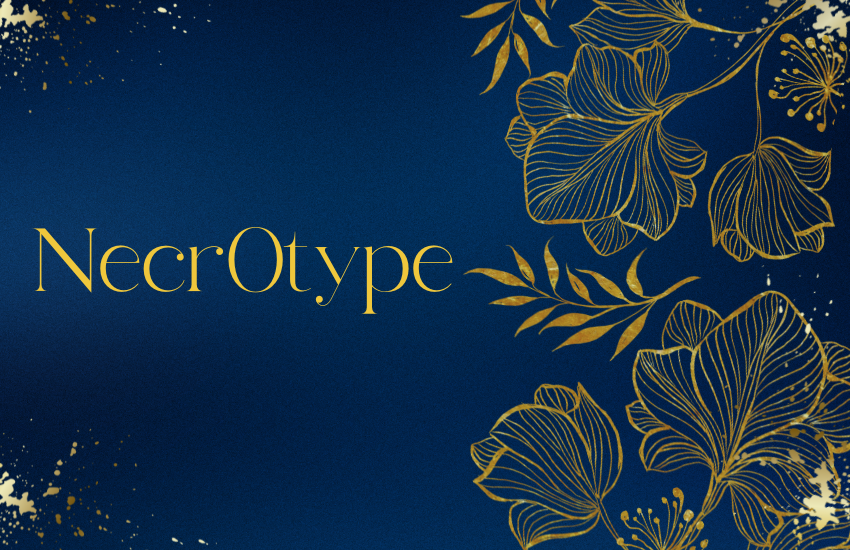The necr0type is a captivating concept deeply rooted in the human fascination with death, the afterlife, and the boundaries between life and the beyond. Its enigmatic allure spans centuries, evolving through mythology, religion, literature, and modern technology. This article embarks on an extensive exploration of the necrotype’s history, tracing its origins and examining its enduring cultural significance.
Introduction to Necrotype
What is Necrotype?
Necrotype refers to the conceptual and cultural embodiments of death, resurrection, and the metaphysical boundaries that govern the afterlife. While the term is often associated with fictional and mythological constructs, its essence permeates ancient lore, art, and even scientific discourse.
Importance of Necrotype in Culture and Mythology
Throughout history, necrotype has symbolized humanity’s quest to understand mortality. It has shaped spiritual practices, inspired artistic masterpieces, and offered solace through the possibility of life beyond death.
Origins of Necrotype
Early Mentions in Folklore and Legends
Ancient societies often wove necrotype-like themes into their folklore. Stories of the undead, spirits of the departed, and miraculous resurrections feature prominently in oral traditions worldwide.
Etymological Roots of Necrotype
The word “necrotype” derives from Greek roots: “nekros” (dead) and “typos” (impression or form). This etymology underscores its thematic focus on impressions or manifestations of death.
Necrotype in Ancient Civilizations
Necrotype in Mesopotamian Mythology
Mesopotamian myths frequently explored the interplay between life and death. The story of Ishtar’s descent into the underworld exemplifies early necrotype themes, highlighting the cyclical nature of existence.
Egyptian Necromantic Practices
The Egyptians’ obsession with the afterlife is well-documented, with mummification, pyramids, and funerary texts serving as testaments to their necrotype-centric worldview.
Greco-Roman Perspectives on Necrotype
Greek myths such as Orpheus’s journey to retrieve Eurydice reflect early Western interpretations of necrotype. Roman adaptations continued this tradition, blending it with stoic philosophy.
Necrotype in Medieval Europe
The Role of the Church and Necromancy
Medieval Europe saw a tense relationship between religious authorities and necrotype-adjacent practices like necromancy. The Church denounced such pursuits as heretical, though they persisted in underground circles.
The Black Death and Cultural Fascination with Death
The Black Death profoundly influenced European attitudes towards mortality, spawning a macabre artistic movement that celebrated death’s omnipresence—a clear reflection of necrotype’s themes.
Transition to the Renaissance and Early Modern Period
Revival of Occult Sciences and Necrotype’s Role
The Renaissance ushered in a revival of occult sciences, with scholars like Agrippa and Paracelsus exploring the boundaries of life and death. Necrotype’s influence extended to alchemy and esoteric traditions.
Literature and Art Reflecting Necrotype
Works like Shakespeare’s Hamlet and Holbein’s The Dance of Death visually and literarily encapsulate necrotype’s essence, emphasizing existential themes.
Necrotype in Modern History
Evolution in Gothic Literature and Horror
The 18th and 19th centuries witnessed a surge in necrotype’s portrayal through Gothic literature. Classics like Mary Shelley’s Frankenstein and Edgar Allan Poe’s tales exemplify this.
Role in Contemporary Media and Pop Culture
Today, necrotype manifests in diverse forms, from zombie movies to philosophical explorations in science fiction. It continues to captivate audiences across genres.
Cultural Significance Across the World
Eastern Interpretations of Necrotype
In Eastern cultures, necrotype themes appear in Buddhist reincarnation beliefs and Shinto veneration of ancestral spirits, highlighting life’s interconnectedness.
Western Obsessions with the Afterlife
Western traditions often depict necrotype through apocalyptic scenarios, such as the resurrection narratives in Christian eschatology.
Technological and Scientific Analogies of Necrotype
AI and Digital Necromancy
Modern technology has introduced “digital necromancy,” with AI recreating voices and likenesses of the deceased, blurring lines between life and death.
Ethical Implications of Resurrecting the Dead
The ethical dilemmas surrounding such advancements echo necrotype’s core questions about mortality and legacy.
Necrotype in Philosophy
Philosophical Questions of Mortality and Legacy
Philosophers from Plato to Heidegger have grappled with necrotype-like concepts, pondering life’s transience and the meaning of death.
Existential Reflections Inspired by Necrotype
Existentialist thinkers explore necrotype as a metaphor for human finitude, urging individuals to find meaning amidst mortality.
Future of Necrotype
Predictions and Speculations
The future of necrotype may intertwine with advancements in cryonics, virtual reality, and bioengineering, expanding its reach into scientific realms.
The Line Between Myth and Science
As science encroaches on traditionally mythical domains, the necrotype may transition from fiction to reality, reshaping cultural paradigms.
FAQs
1 What exactly does necrotype mean?
Necrotype refers to representations or conceptualizations of death and the afterlife.
2 Is necrotype purely fictional?
While its roots are in mythology and fiction, necrotype has significant cultural and philosophical implications.
3 How does necrotype relate to necromancy?
Necromancy involves magical practices to summon the dead, while necrotype represents broader death-related themes.
4 What are examples of necrotype in media?
Movies like The Sixth Sense and games like Dark Souls exemplify necrotype.
5 Can science achieve necrotype-like concepts?
Technologies like AI and cryonics show potential for realizing necrotype-like ideas.
6 Why is the fascination with necrotype so universal?
It stems from humanity’s intrinsic curiosity about mortality and the unknown.

